The document summarizes the history and development of lasers from 1916 to 2002. It describes key early developments like Einstein proposing stimulated emission in 1916. The first observation of population inversion occurred in 1946. The maser era from 1950-1960 saw developments like the ammonia maser and microwave solid-state maser. On May 17, 1960, Ted Maiman at Hughes Research Labs operated the first ruby laser, opening the laser era. Laser technology then evolved rapidly with developments in the early 1960s including the He-Ne gas laser, Nd:glass laser, and mode locking. The document outlines some of the unusual lasers developed in later decades as well.


![Maser and Lasers: Looking Back Fifty+ Years
Laser Pre-history 1916—1950
1916—1940 Quantum theory emerges, stimulated emission understood
1940—1950 Optical pumping, magnetic resonance physics are developed
July 1946 First observation of man-made population inversion?
The Maser Era 1950—1960
1951—1956 Ammonia maser, then microwave solid-state maser
1956—1959 Maser concepts evolve towards the laser
The Laser Era Opens 1960—1966
May 1960 Maiman s ruby laser breaks open the laser era
1960—1966 Laser technology evolves with immense rapidity
Lasers, then and now 1966—2002
1966—2000 Lasers in the Tabloids [ Lasers im Bild ]
2002 Laser applications, economics, and continued evolution](https://image.slidesharecdn.com/stanfordlaserhistory-240219102355-30130544/75/Laser-Development-History-Stanford-laser-history-3-2048.jpg)
![1916: Einstein introduces quantum transitions
We introduce the following quantum-theoretical hypothesis. Under the
influence of a radiation density a molecule can make an [upward]
transition from state n to state m by absorbing radiation energy We
similarly assume that a [downward]* transition m to n associated with a
liberation of radiation energy is possible under the influence of the
radiation field, and that it satisfies the [same] probability law
Einstein introduced his A and B coefficients
to distinguish between spontaneous and
stimulated transitions. Van Vleck in 1924
was, however, apparently the first to refer to
downward stimulated transitions as
“stimulated emission”.
E1
E2
N1
N2](https://image.slidesharecdn.com/stanfordlaserhistory-240219102355-30130544/75/Laser-Development-History-Stanford-laser-history-4-2048.jpg)

![1924: Hendrik Kramers adds negative dispersion
If the atom is in one of its higher states, the atom will then give rise
to a kind of anomalous dispersion with the sign of [the induced
polarization] P reversed.
This so called negative dispersion is closely connected with the
prediction made by Einstein, that the atom for such a frequency will
exhibit a negative absorption, I.e. light waves of this frequency, passing
through a great number of atoms in the state under consideration, will
increase in intensity.
excited-state
response
lower-state
response](https://image.slidesharecdn.com/stanfordlaserhistory-240219102355-30130544/75/Laser-Development-History-Stanford-laser-history-6-2048.jpg)





![1947: Lamb & Retherford suggest gas discharges
But for microwave population inversion:
On the basis of the preceding discussion one would expect that
the 2p levels [in a hydrogen discharge] would be about five to ten
times more populated than the 2s levels. In that case, one would
expect to find a negative [microwave-frequency] absorption and as
estimated below a large one . . . . . . . . Phys. Rev., vol. 79 (1950)](https://image.slidesharecdn.com/stanfordlaserhistory-240219102355-30130544/75/Laser-Development-History-Stanford-laser-history-12-2048.jpg)





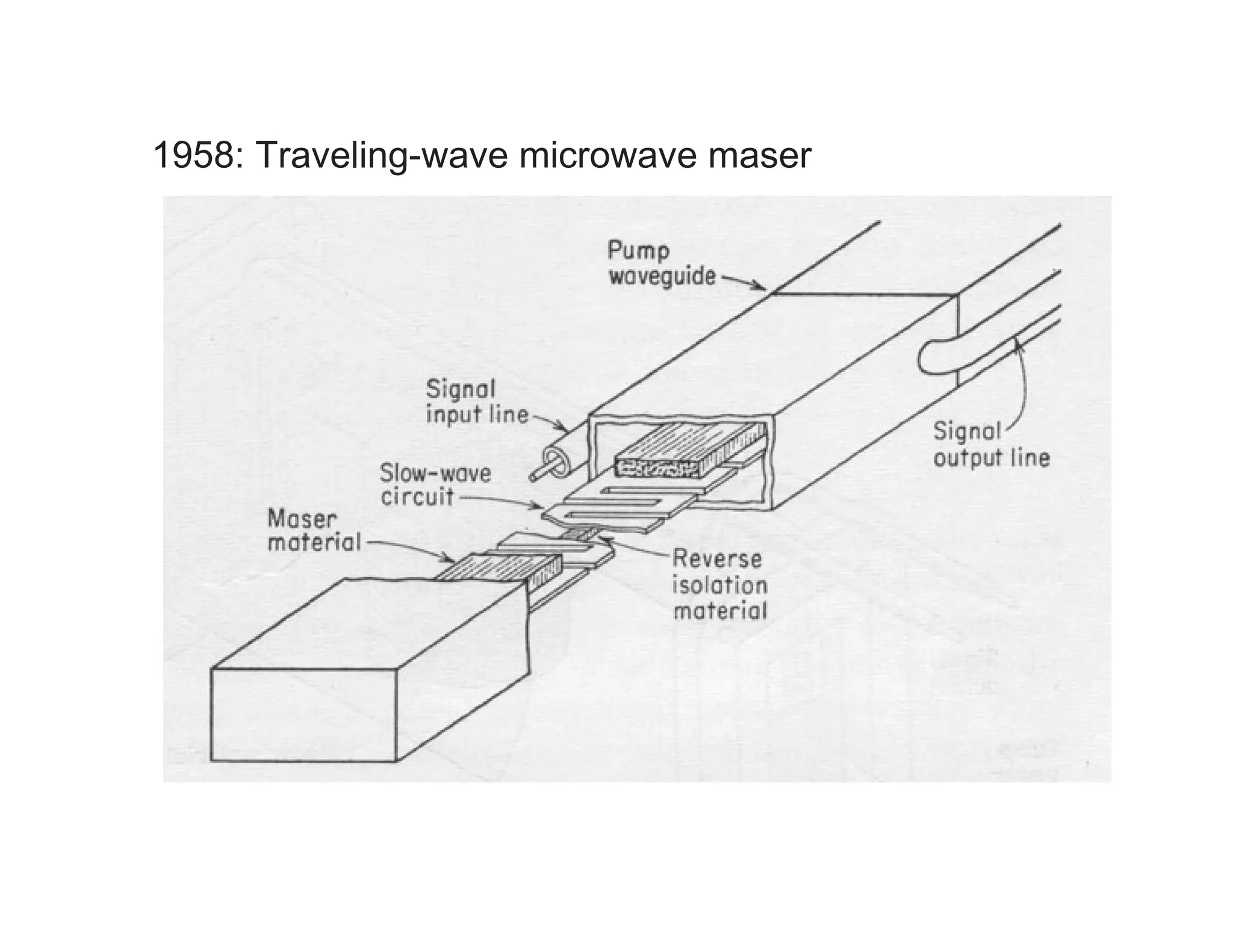







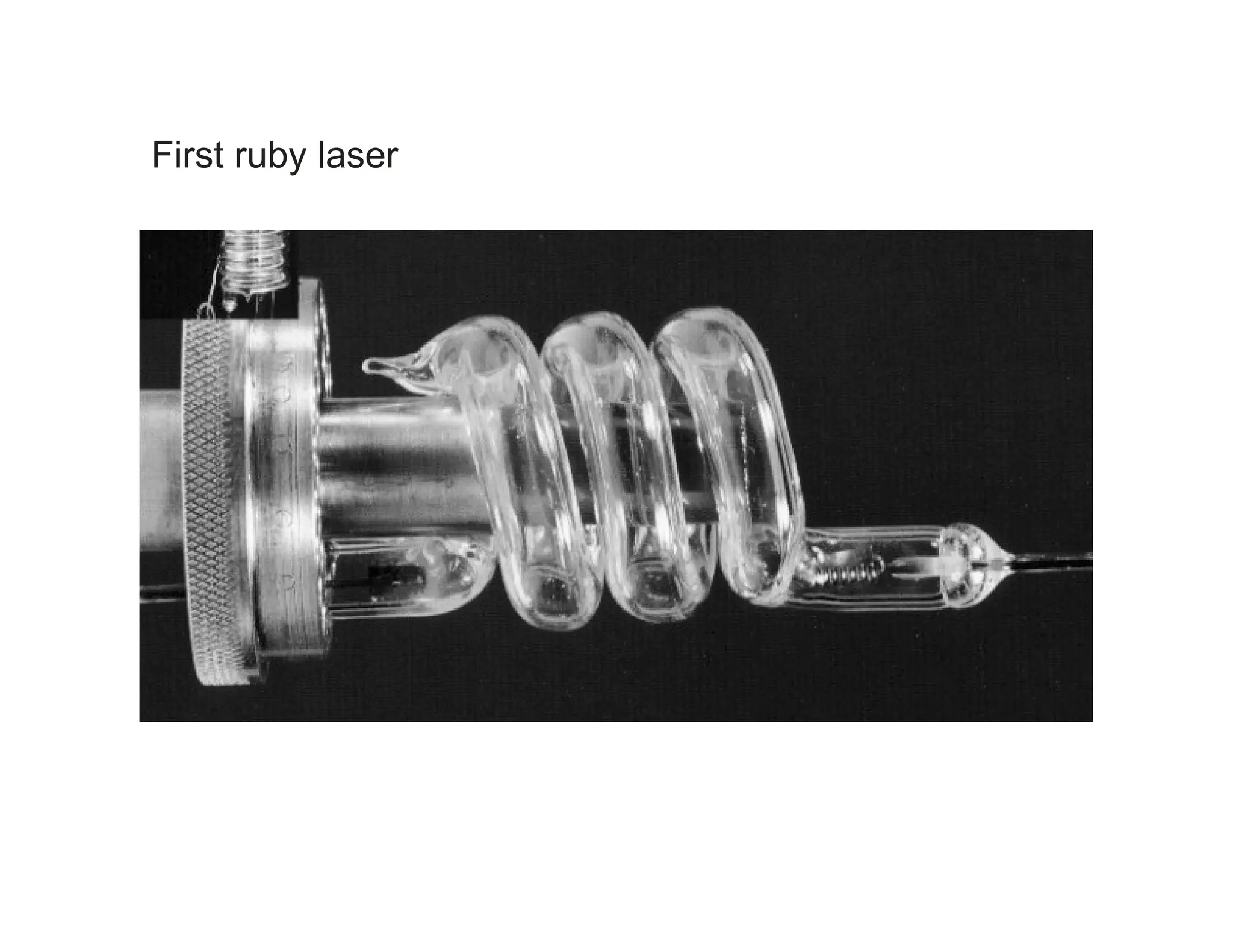

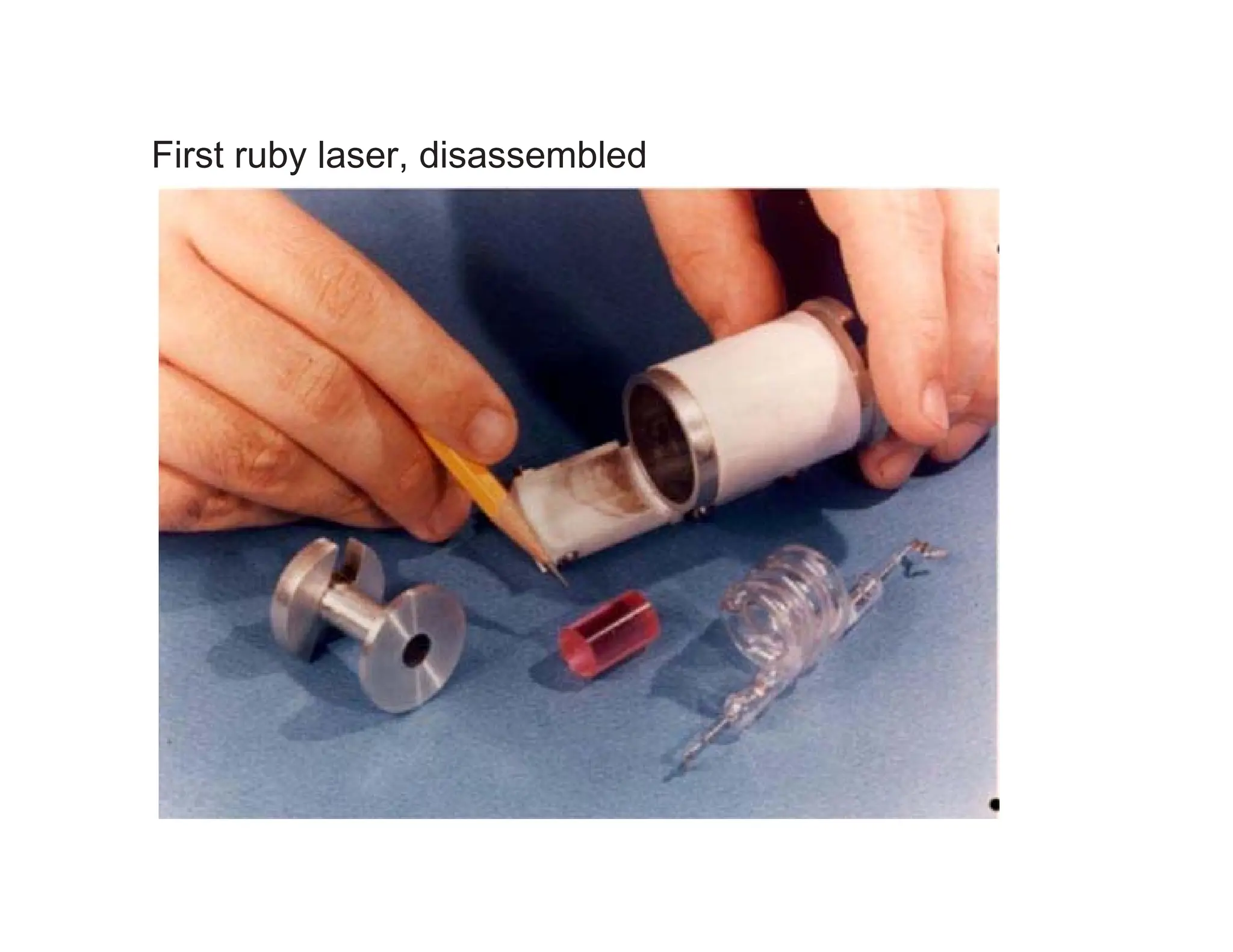


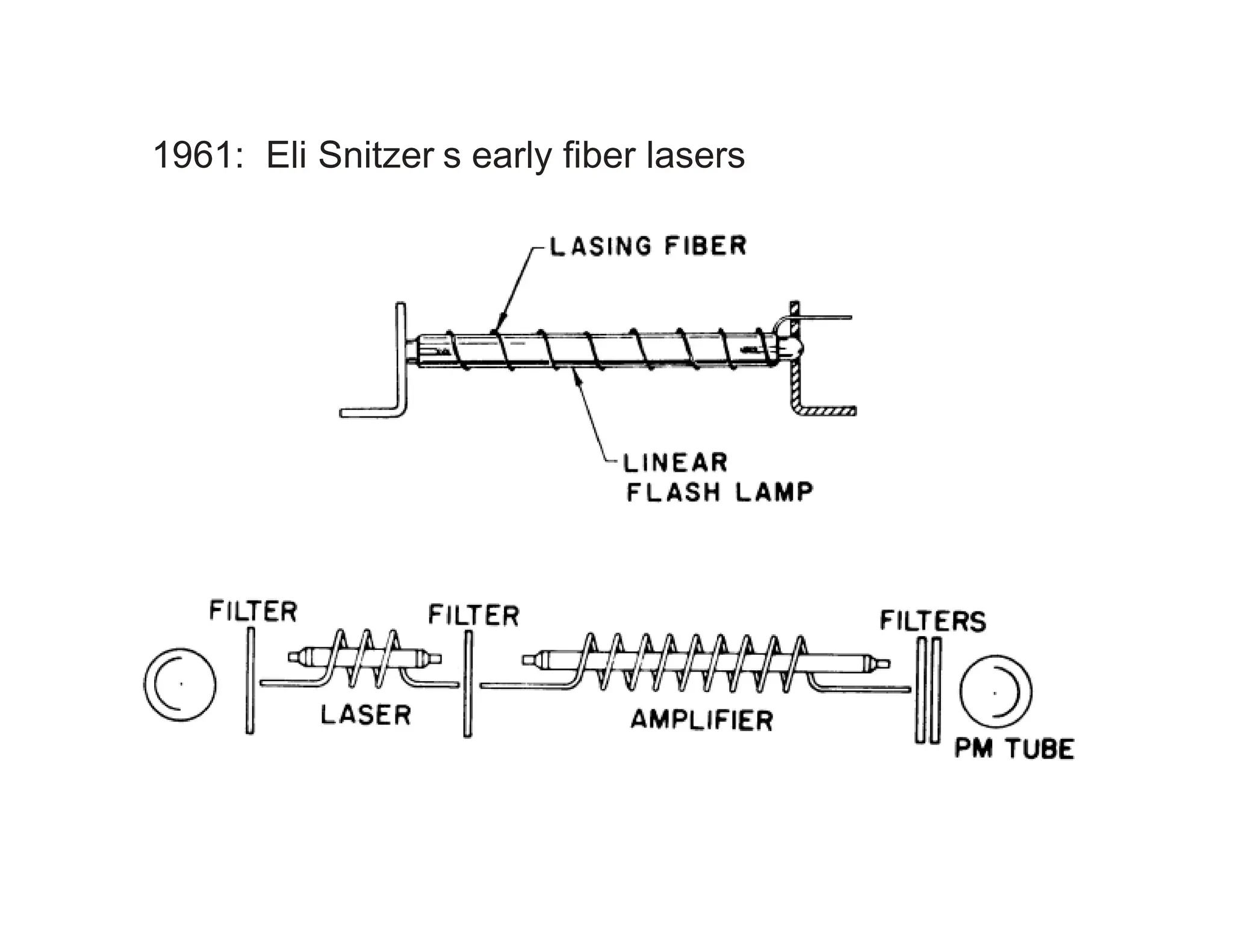
![1961: First laser medical treatments
“In December 1961 the Columbia-Presbyterian Hospital
used a laser on a human patient for the first time,
destroying a retinal tumor with the American Optical
[ruby laser] photocoagulator.”
Joan Lisa Bromberg
The Laser in America, 1950—1979
Laser History Project / MIT Press, 1991](https://image.slidesharecdn.com/stanfordlaserhistory-240219102355-30130544/75/Laser-Development-History-Stanford-laser-history-32-2048.jpg)



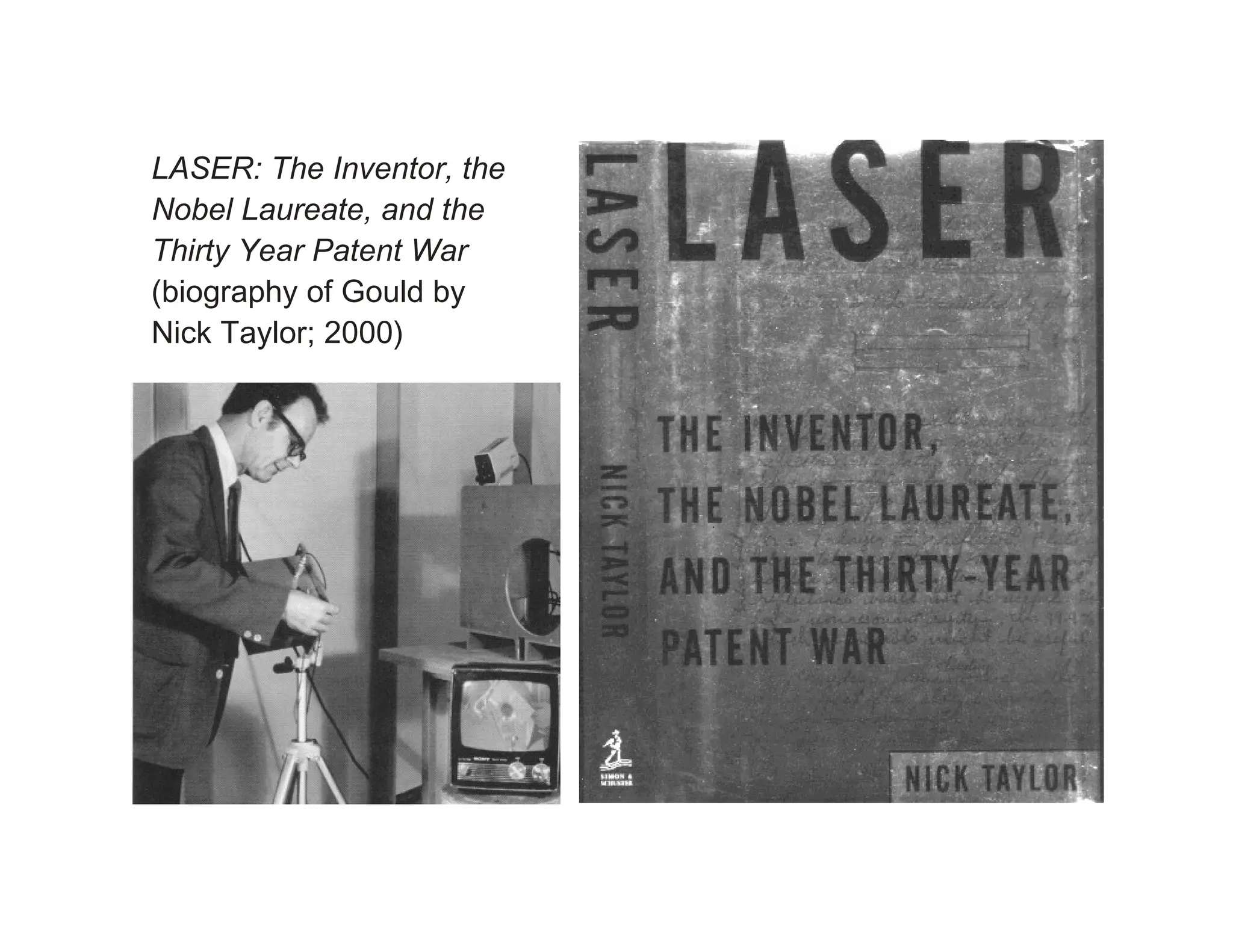

![Lasers im Bild [Lasers in the Tabloids]
¥The real Ruby Laser
¥Mal Stitch s real claim to fame
¥What lasers are really good for
¥Making a really low-cost laser
¥Making a really high-power laser](https://image.slidesharecdn.com/stanfordlaserhistory-240219102355-30130544/75/Laser-Development-History-Stanford-laser-history-38-2048.jpg)
















